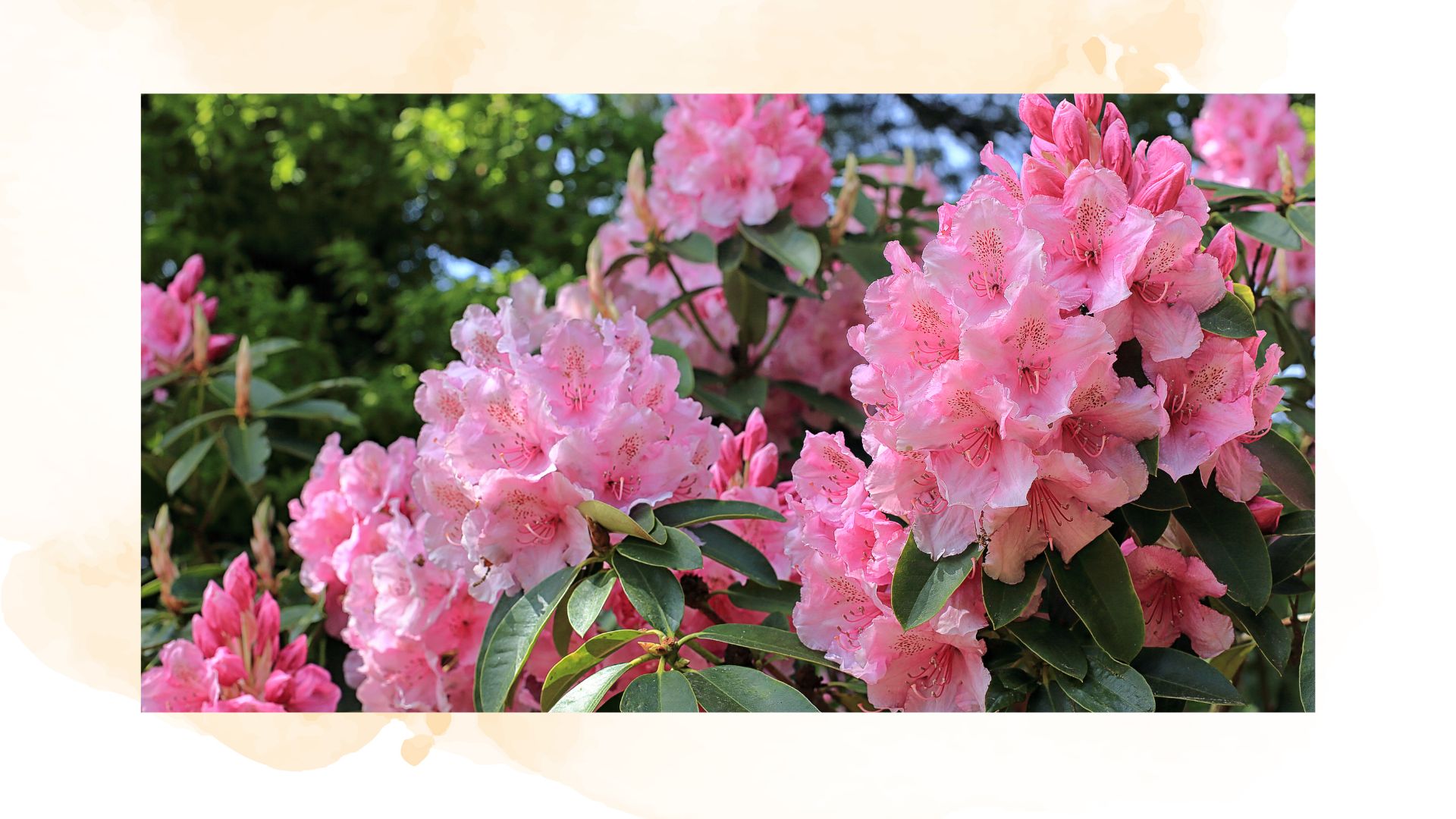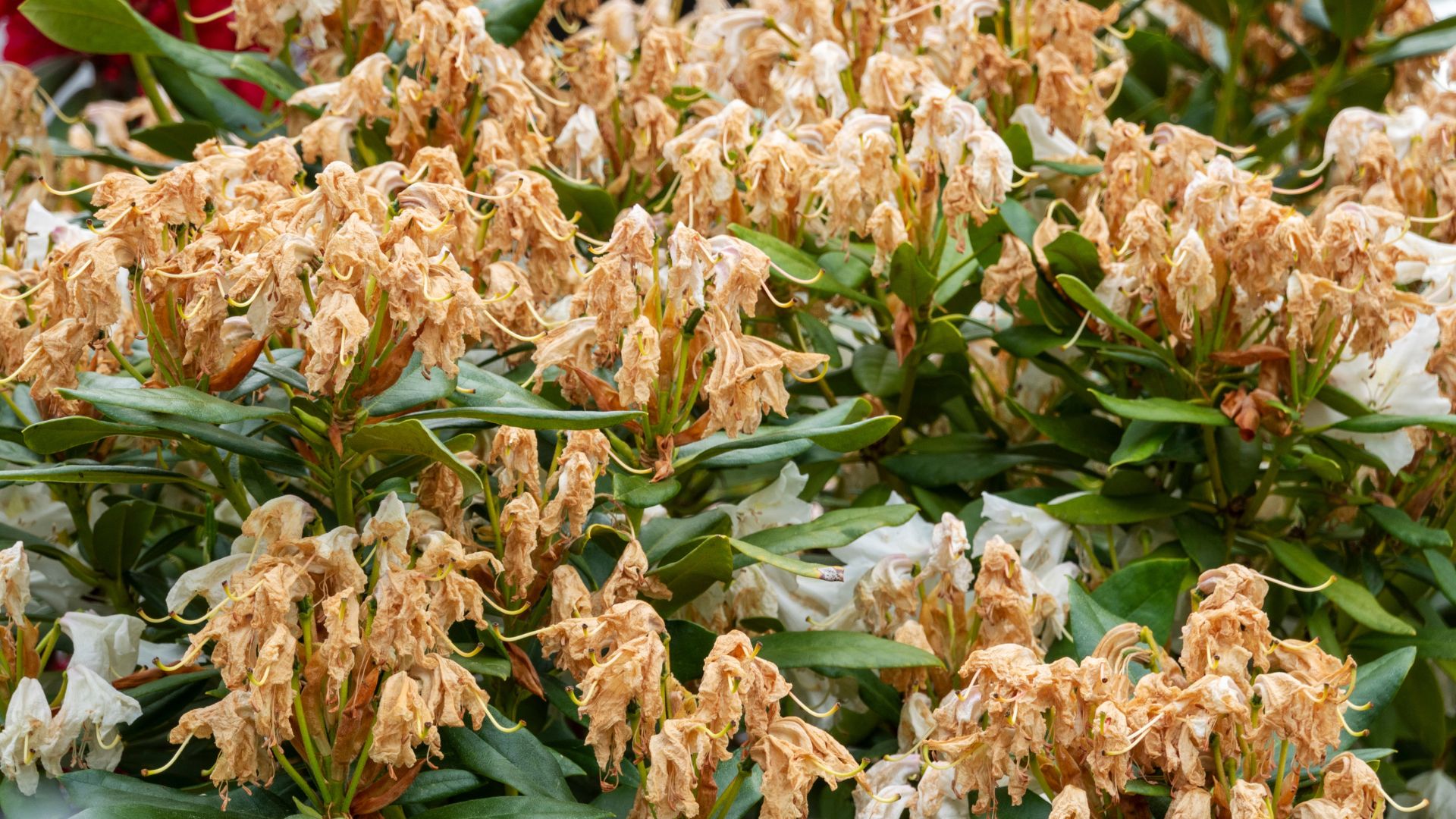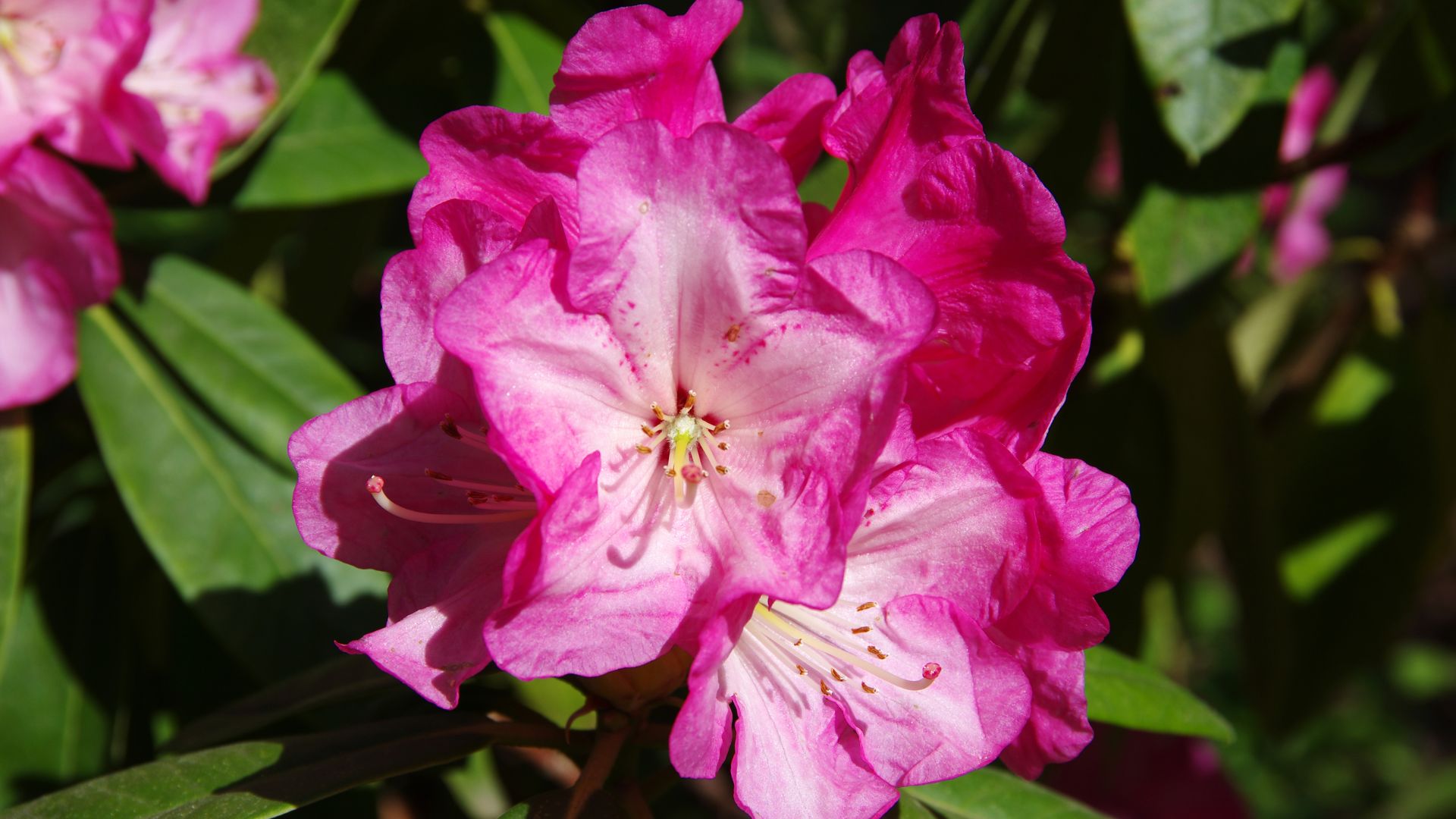
When it comes to garden maintenance, giving your plants a deadhead can often make all the difference, both for their health and appearance. However, some species prefer to be left untouched. So, should you deadhead rhododendrons? Is this bush one of those plants that'll benefit or suffer?
Whilst deadheading is an easy gardening tip that every gardener should know, there are surprisingly quite a few plants that you should never deadhead. The practice can help with regrowth for most plants, but for others, it can stunt that growth and lead to premature wilting.
So, what is the verdict for this evergreen woody plant? We spoke to gardening experts to seek professional advice to settle the debate.
Should you deadhead Rhododendrons?
As the seasons begin to shift, many homeowners will be starting to wonder how they can sort their gardens out. A great first step in plant maintenance is deadheading, but unfortunately, this doesn't apply to all species.
"Deadheading isn't just for aesthetics. By removing spent blooms, you can encourage the plant to grow new flowers instead of seeds. It often leads to a longer blooming season, healthier plants, and a tidier garden," explains Jane Dobbs, lead gardener at Allan's Gardeners.
Luckily, rhododendrons do benefit from deadheading, and this should be done just after their flowers fade. Jane says, "Depending on your region's climate and the variety of rhododendrons, this usually happens in late spring or early summer. When the flowers have withered and started losing their colour, it's time to deadhead."
What are the benefits of deadheading Rhododendrons?

Now you know you're safe to deadhead your rhododendrons, there are various benefits for doing this, similar to how deadheading hydrangeas is beneficial.
"This is beneficial for them, specifically because they are large-flowered plants and, like with most after flowers, this allows them to put more energy into producing new buds and growing leaves instead of seeding," explains Petar Ivanov, gardening expert at Fantastic Gardeners.
He also points out that deadheading, whilst done to make the bush more attractive, will also reduce the likelihood of fungus growth on the plant.
FAQs
How to deadhead rhododendron
The method of deadheading is a super simple one and only requires a few of the essential tools every gardener needs.
Jane explains, "You need a few basic tools to deadhead rhododendrons. A pair of gloves will protect your hands from the sap and give you a better grip. To cleanly cut spent flowers, you'll need pruning shears or secateurs."
She says to look for faded or wilted flowers as these are the ones that'll need to be deadheaded.
"You'll need to gently hold the spent bloom between your thumb and forefinger. With your fingers or pruning shears, snap or cut the flower stalk just above the point where new growth starts. It is important not to damage the emergent shoots or leaves," she adds.
Why not add the withered flowers and foliage to your homemade compost pile? It'll reduce your garden waste and prevent any diseases from being spread from the spent flowers lying on the floor.
What happens if you don’t deadhead rhododendrons?

Knowing how to deadhead plants properly is something every gardener should know, not only does it make your garden look better but it's extremely beneficial for the plants themselves. Not deadheading them can lead to a few avoidable issues.
"Deadheading rhododendrons isn’t essential, but it’s definitely worth doing if you want the plant to look its best and bloom its hardest the following year. When you leave the faded blooms on, the plant starts putting its energy into forming seed heads," explains Andrew Porwol, garden expert and Founder of Garden Centre Shopping.
"While that’s part of its natural cycle, it can take away from the effort it puts into new growth and next year’s flowers. You also end up with a bit of a scruffy-looking shrub by midsummer - those dry, brown flower heads don’t do much for curb appeal," he adds.
Although your plant will be fine without deadheading, spending a few minutes giving the bush a chop when needed can make a huge difference in the long term.
How do you keep a rhododendron blooming?
If you want your garden to look its best all summer long, you'll probably be wondering how you can keep your plants thriving for as long as possible, too. The good news is, it's possible to keep your rhododendron happy for a long while.
"The trick to consistent blooms is getting the basics right. Rhododendrons prefer acidic, free-draining soil - if you’re not sure about your pH, it's worth doing a quick soil test. They like dappled sunlight- morning sun with some afternoon shade is ideal," says Andrew.
His best tip, though? Not letting the roots dry out, especially during the summer months. Knowing how often you should water outdoor plants in hot weather can make all the difference.
"A thick mulch of bark or pine needles helps keep the soil cool and moist. And feed it -but not just anything. A fertiliser for acid-loving plants in spring gives it the boost it needs. Also, avoid heavy pruning. Light shaping after flowering is fine, but too much can interfere with the next season’s buds," continues Andrew.
Do rhododendrons flower twice a year?
Aside from succession planting, having plants that flower multiple times is a great way of keeping your garden colourful and full for longer.
"Most varieties give you just one show-stopping bloom in spring. That said, there are newer hybrids, some from the Encore or ‘repeat-bloomer’ range, that can flower again later in the season," explains Andrew.
"They’re not as widely available, but if you're after a longer display, they’re worth seeking out. For most gardeners, though, one big burst of colour each year is the norm - and with the right care, it’s absolutely worth the wait," he says.
If you are looking to add some more florals that will last into autumn, we'd recommend planting late summer flowers. They'll have your garden looking beautiful right until the start of winter.
Why not try some easy flowering plants this summer? They're the perfect species for busy gardeners who still like to be surrounded by flowers despite not having time to maintain flower beds all season.







